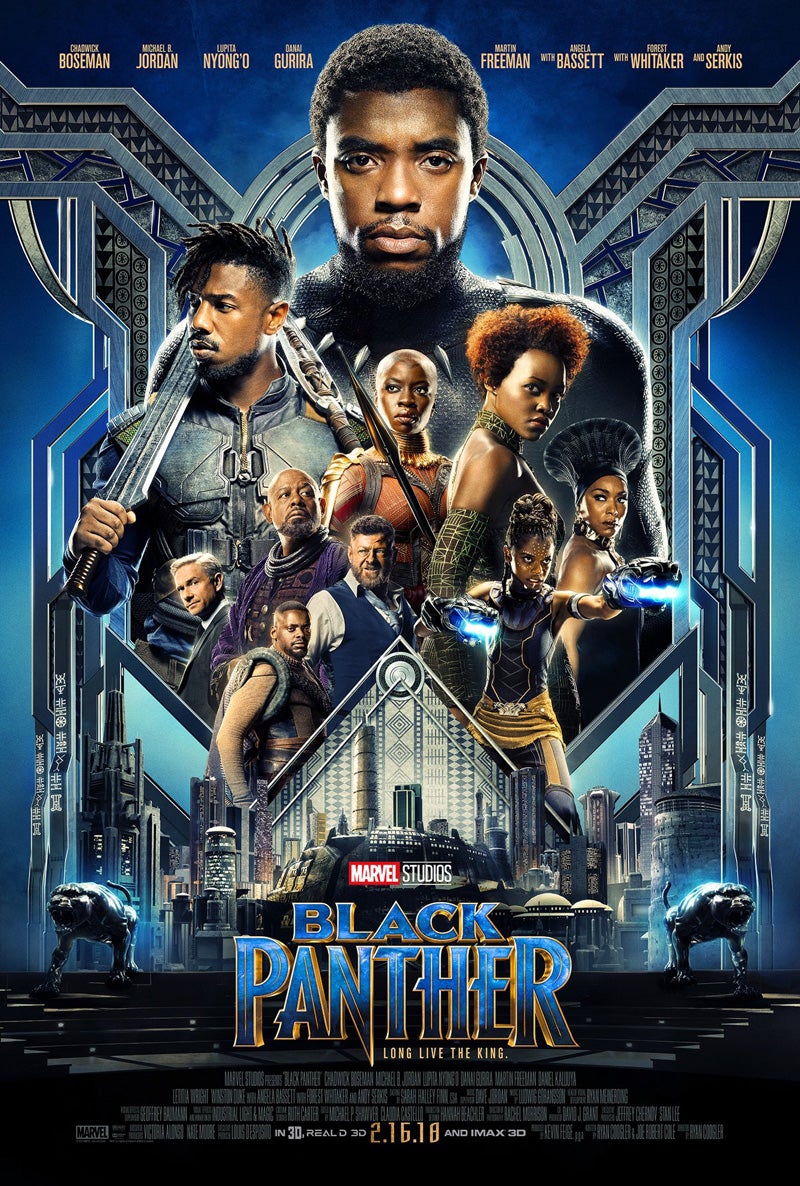Relative Size: T’Challa is the largest character portrayed on the poster followed by Erik and then the other characters get smaller in size as they descend from the top of the poster to the bottom.
Feminine Touch: Absent. Two of the four women however are gripping weapons
Function Ranking: Arguably present. T’Challa and Erik both fight for position as leader in the movie and regardless of who is in charge throughout the movie, both men are portrayed as visibly above the other characters on the poster.
The Family: Arguably present. Like past posters there are family members portrayed on the poster like T’Challa, Shuri, and Romonda who are all direct family members, and even Erik is T’Challa’s cousin. However, none of the characters interact on the poster in a familial way.
Ritualization of Subordination: The poster is layered with T’Challa being place highest followed by Erik, then there are three women characters (Romonda, Nakia, and Okoye), then Shuri and Zuri, and followed by Ulysses, Agent Ross, and W’Kabi respectively.
Licensed Withdrawal: T’Challa/Black Panther is the only character who maintain direct eye contact with the viewer.
Note: I would have to go back through prior posts, but the character’s displayed are a lot closer to 50/50 gender representation when compared to others with 4 women per 6 men portrayed on the poster.
Note: Though not directly related to gender and media, I find it important to note how groundbreaking Black Panther is for its high diversity, and the cast is primarily African American. I make this note particularly because gender and race are so interconnected.
Shared by: Erin Vits
Image Credit: https://comicbook.com/marvel/news/marvel-cinematic-universe-movie-posters/#3
